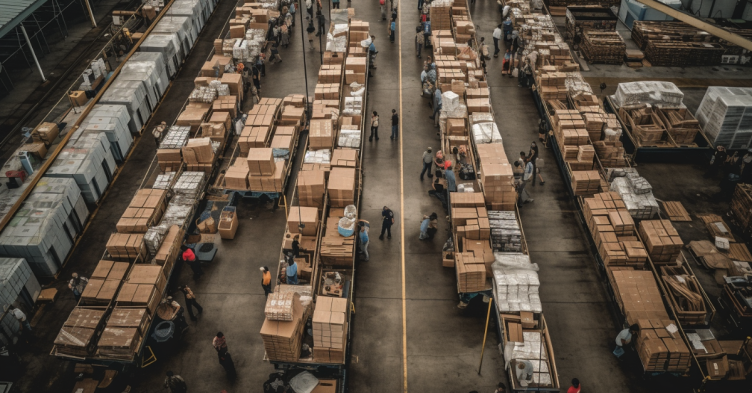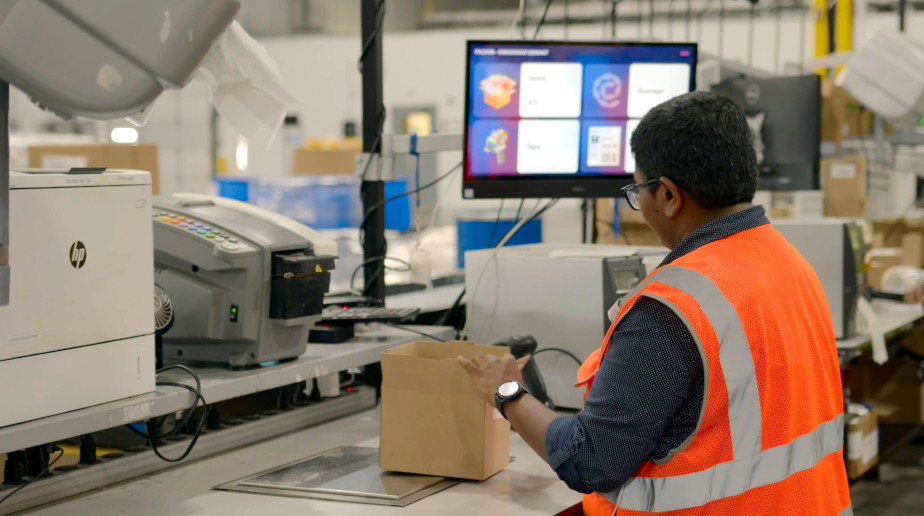Getting Your Warehouse Holiday Ready in 2022
The countdown has begun and you’re bracing for the upcoming holiday peak season. We know the holidays can be a very demanding time for retail and e-commerce operations. Most of us will be shopping more during this time and (hopefully) take advantage of the year’s best deals. Coping with the sudden (and inevitable) surge in order volume requires special preparation, especially for warehouses and fulfillment centers. It’s no surprise that many successful businesses begin preparing at least one month in advance for a holiday like Christmas or Hanukkah.
Although there’s a lot that needs to be done in preparation for peak season, the solutions are quite simple, and the earlier you start the more effectively you can reduce feeling overwhelmed or fatigued for both you and your team.
Here are 5 things to keep in mind when preparing your warehouse for the upcoming peak season.
(Re)organization : small changes that go a long way
In our last blog, we gave an overview of 5S methodology and why sorting, cleanliness and layout are the best ways to maximize efficiency. This becomes even more critical during peak season. Since you’re handling higher order volumes, you also need to consider the safety of workers, who are expected to work much faster to keep up with demand.
The most cost-effective way to optimize your warehouse is to focus on inventory. Some warehouses try to stuff as much inventory in as possible by getting more shelves, narrowing aisles and stacking items high which comes at a huge cost to workers’ safety.
During peak season, you will want to reduce congestion as much as possible. If you have limited floor space and can’t move shelves further apart, smart management of your incoming inventory is the way to go. This will make it easier for your employees to find items, move quickly and not clog up the aisles.
Work closely with your marketing and sales department to get the latest seasonal order profiles, and see which categories of items are in highest demand during this time of year. Past forecasts and current consumer trends will help you prepare for incoming stock and store it for ease and efficiency. Inventory management software can also provide you with important insights, like seeing which products are frequently ordered together so you can place them close to each other.
The slotting and storage systems you choose can depend on many factors like available space, product type, weight and dimensions, pickers’ safety etc. To adapt to variable demand during the holidays, try Dynamic Slotting (as opposed to Static Slotting) so you can keep shuffling around products based on their velocity. High velocity products should always be stored at the pick face so they can be grabbed quickly.
Safety first: improve speed without causing accidents
Your warehouse teams will be working more quickly during this busy time, so accidents are more likely than usual. With moving machinery like forklifts, and an additional temp workforce the warehouse space will get more crowded. Fatigued employees are also more distracted and likely to make mistakes, which can be dangerous to themselves or others. Make sure to check for possible hazards in your warehouse to minimize injuries and improve workflow.
Some general OSHA guidelines on how to do this include:
- Keeping all surfaces clean and dry. Handle spills immediately, and make sure employees remove snow / rain boots before working on the floor.
- Clearing the floor and aisles of all clutter. Dropped items or improperly placed boxes can trip people up, especially when they’re carrying items.
- Keeping the warehouse well-ventilated and at a comfortable temperature.
- Scheduling frequent rest breaks for staff who are on their feet or lifting heavy items.
- Separating and clearly marking all the known hazards (e.g. faulty equipment) with visible signs or tape.
Communicate: make sure that all departments are coordinating constantly
Organizational silos are a problem even under normal circumstances, but can be disastrous during peak season. With an increase in activity — and high expectations from customers — you can’t afford to have a lack of coordination between departments. Last minute surprises cause frustration for everyone and affect their ability to do their job well.
Keep in mind that supply chains continue to be fragile globally as we learn to adapt to the challenges brought on by the pandemic. Communication is the best tool you have for managing during this unpredictable time.
By keeping communication channels between the warehouse and other departments open, you can make sure they’re able to update each other as soon as situations develop. If you are running low on stock unexpectedly, you’ll need to communicate with your suppliers ASAP.
Tools like trend forecasting can make planning easier, but nothing is ever 100% predictable during the holidays. Expect the unexpected, and update your teams as soon as issues occur to keep things running smoothly.
Learn from the past: use errors and complaints to your advantage
One of the best things you can do for your business is document thoroughly and encourage employees to report issues. By recording which measures were taken in the past, you can standardize best practices and not have to start from scratch every year. Complaints and concerns raised by employees will point you to where the problems are occurring. Use huddles or daily team syncs to bring up issues and make note of them.
As you start planning for the current year, look back at past seasonal trends and study the errors, emergencies and bottlenecks which occurred. Use this data to form a better strategy for the current year and prevent the same issues. Some examples of common issues include:
- Shortages of packing materials.
- Understaffing.
- Accidents on the floor.
Well begun is half done: quality control at every stage
Some managers tend to focus on the outbound processes and stations when analyzing bottlenecks, since this is when these problems usually become visible. However, experience shows that the mistakes causing delays are more likely to occur in the beginning, or inbound stage. Having a cramped or overcrowded docking space is one surprisingly common mistake. To streamline the entire process, you’ll benefit from starting quality control at the beginning when you are receiving inventory.
Issues that pop up at the receiving stage can include miscounts, missing or incorrect inventory, and accidentally damaging goods through improper handling and storage.
Here are some ways to prevent common issues:
- Make sure your receiving dock is clean, free of clutter and has a reasonable amount of space for people to move quickly.
- Keep it adequately staffed, with trained employees who can handle and transport the stock safely.
- Make sure your inventory tracking technology (e.g. barcode scanners) is working properly before the stock is expected.
- Schedule maintenance of machinery and systems like conveyors before the expected surge of inventory.
In the outbound stage i.e. the picking and packing stations, make a few tweaks so that the workflow remains uninterrupted even if some errors manage to slip through. Have a separate, designated space where boxes with errors or exceptions — such as fragile items or packages exceeding the weight limit — can go and be handled with special care, while packers continue working on other orders.
Even if you manage to do everything right, expect returns to be a part of peak season. Since processing returns can be even more time-consuming than order fulfillment, you may want to set aside a special area dedicated solely for returns, where the employees can inspect and restock returned items without disrupting order fulfillment.
Let Rabot help you prep for the holidays
Feeling overwhelmed as peak season approaches? Our tools for your packing operations can help you plan better, spot what is not working and use learnings from past data to your advantage. Contact us today to find out more.









